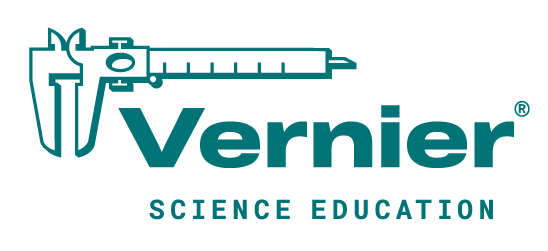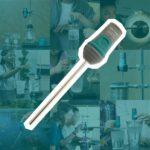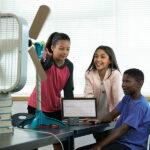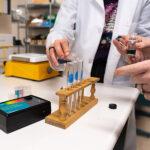
Sharing ideas and inspiration for engagement, inclusion, and excellence in STEM

The persistent shortage of qualified high school science and STEM educators remains a national challenge, driven in large part by high attrition rates. Among the most commonly cited reasons for leaving are outdated lab equipment, insufficient instructional supplies, and poorly maintained facilities. These conditions hinder effective teaching and diminish job satisfaction—ultimately pushing many science teachers out of the classroom.
This reality has prompted a key question for school and district leaders:
Could strategic investments in modern lab environments help districts not only retain current STEM teachers but also attract new talent?
The Link Between Lab Quality and Teacher Retention
When teachers have access to safe, well-equipped labs, reliable technology, and sufficient materials, they’re more likely to stay. A landmark study of Washington, D.C. schools found a direct correlation between facility quality and teacher retention rates. In fact, improving a school’s facility rating from “poor” to “average” increased teacher retention by three percentage points, almost two‑thirds the effect of a significant salary raise. Notably, facility quality had a stronger effect on retention than dissatisfaction with pay.
This trend holds across multiple contexts. The Institute of Education Sciences named “School Facilities and Resources” as one of the top eight factors influencing teacher retention. A national study found that while most science teachers report high levels of job satisfaction and collegiality, far fewer expressed satisfaction with their school’s science facilities. In rural districts, where lab infrastructure is often underfunded, this challenge is even more pronounced. According to the Center for Excellence in Education, teachers in these areas frequently cite a lack of supplies and inadequate lab support as a key reason for leaving.
Some districts, however, have bucked this trend. A cross‑case analysis of high‑retention schools found that science teachers consistently pointed to institutional support, whether in the form of high‑quality lab equipment or simply not having to purchase materials out of pocket, as a core reason for staying. Feeling “valued” by their schools made continued teaching both sustainable and professionally rewarding.
National Data Confirms High-Quality STEM Equipment and Facilities Matter
Large‑scale quantitative data supports these qualitative findings. In a national survey of U.S. high schools, more than 50% cited inadequate lab funding as a serious barrier to delivering high-quality instruction. Another 41% reported that deficiencies in basic science facilities was a significant issue. Given these conditions, it’s clear why so many teachers leave, and why better‑equipped labs are seen as a practical retention strategy.
Improving lab infrastructure is both cost-effective and impactful. While across-the-board salary increases may be fiscally unfeasible, targeted investments in science labs address a core instructional frustration: the inability to do their jobs well. When teachers feel their school supports their work with the right tools and a functional, safe classroom lab environment, they’re far more likely to stay.
Modern Science Labs Enable Effective, Engaged Teaching
Teachers take pride in leading experiments, guiding student inquiry, and delivering engaging, hands‑on lessons. But to do that effectively, they need access to the right tools.
Science is a hands-on discipline, and as the National Science Teaching Association emphasizes, laboratory investigations must be an integral part of the science curriculum. To fully implement standards-aligned instruction, such as the Next Generation Science Standards (NGSS), teachers need up-to-date tools—from analysis software to probeware. With these resources, they can deliver rigorous, inquiry-driven lessons that not only make science come alive but also enhance their instructional effectiveness and foster a deeper sense of professional accomplishment.
Without those tools, the story changes. Research shows that teachers in under-resourced classrooms and labs often feel constrained, unable to execute the kinds of experiments and projects that inspired them to teach in the first place. Over time, the disconnect between their aspirations and the reality of limited resources can undermine morale and increase the likelihood of teacher burnout.
On the other hand, access to modern tools, such as electronic sensors, data loggers, and digital simulations, empowers teachers to innovate. It keeps instruction dynamic and allows teachers to be responsive to student needs. And when students are more engaged, teachers feel more effective and motivated.
Well-Equipped Labs Enhance Teacher Recruitment
Modern science classrooms also provide a competitive edge in sourcing new teachers. While salary and geographic location remain significant factors, the teaching environment is increasingly influential—particularly for candidates with in-demand STEM credentials.
A well-stocked lab outfitted with digital sensors and cutting-edge equipment sends a clear message: this school values science education and supports its teachers. Much like in industry R&D or higher education, well-equipped classrooms can function as key recruitment tools in K–12 spaces, too. Some districts now highlight photos of their STEM facilities in job postings, recognizing that these assets distinguish them in a competitive labor market. For candidates deciding between otherwise comparable roles, a high-quality lab can be a decisive factor.
This approach is backed by research from the Center for American Progress, which found that inadequate resources hinder recruitment and hiring and that providing teachers with the materials they need should be a foundational element of any long-term talent strategy.
Teachers are more likely to accept and stay in roles where schools are well‑organized, resource‑equipped, and designed to support effective teaching. Yes, culture and leadership matter. But for many science teachers, the promise of a modern lab may be what gets them in the door—and part of what convinces them to stay.
Districts Must Pair Modern Tools with Robust Support
Whether it’s a first-year educator or a seasoned science pro, all teachers need support to thrive.
Studies show that new teachers are twice as likely to remain in the profession when they receive targeted onboarding and professional development, particularly around the instructional use of equipment and lab resources. Veteran teachers, too, benefit from access to new tools that allow them to evolve their practice, maintain engagement, and avoid burnout.
No teacher wants to feel like they’re going it alone. When districts pair tailored professional development with the right tools, teachers feel equipped and energized. This integrated approach significantly strengthens retention efforts.
Explore District-Wide STEM Solutions Trusted by Teachers
At Vernier, we believe every student deserves a hands-on, high-quality science education, and every teacher deserves the tools to make that happen.
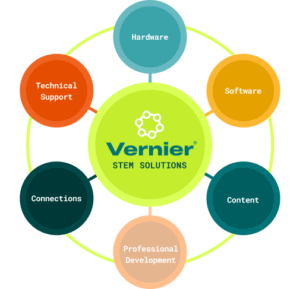
Vernier STEM solutions combine easy-to-use sensors and probeware, intuitive software, 3D-aligned experiment content, and flexible professional development to help you build a district-wide STEM program that attracts top teacher talent and supports their success.
Whether you’re equipping one classroom or scaling across your district, Vernier is here to help you
- Strengthen science instruction and teacher confidence.
- Boost student engagement and STEM proficiency.
- Improve teacher satisfaction and retention.
- Meet state standards with research-backed, scalable solutions.
Explore our district solutions today and connect with your local Partnership Manager to learn more.
Share this Article

Sign up for our newsletter
Stay in the loop! Beyond Measure delivers monthly updates on the latest news, ideas, and STEM resources from Vernier.
